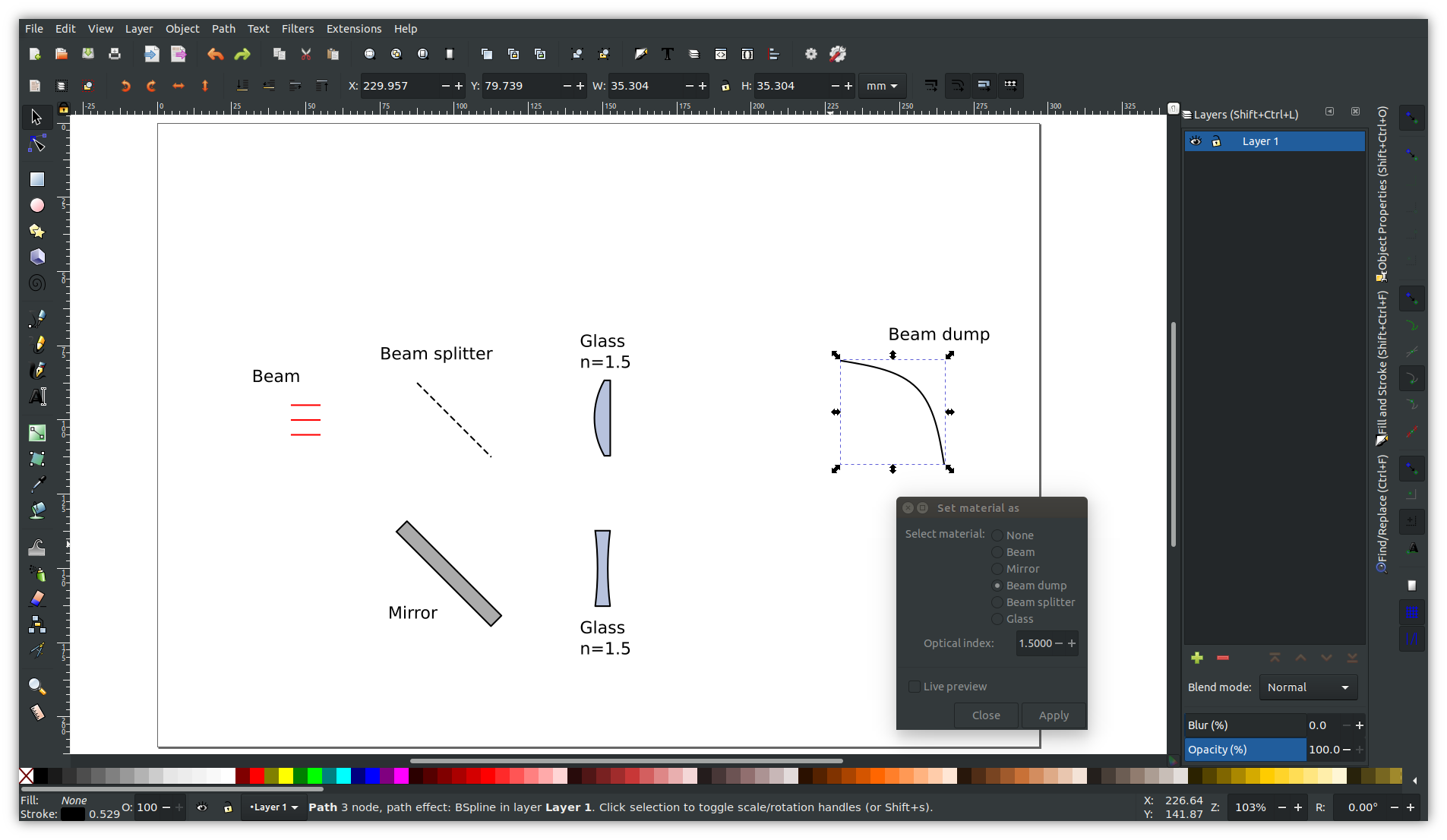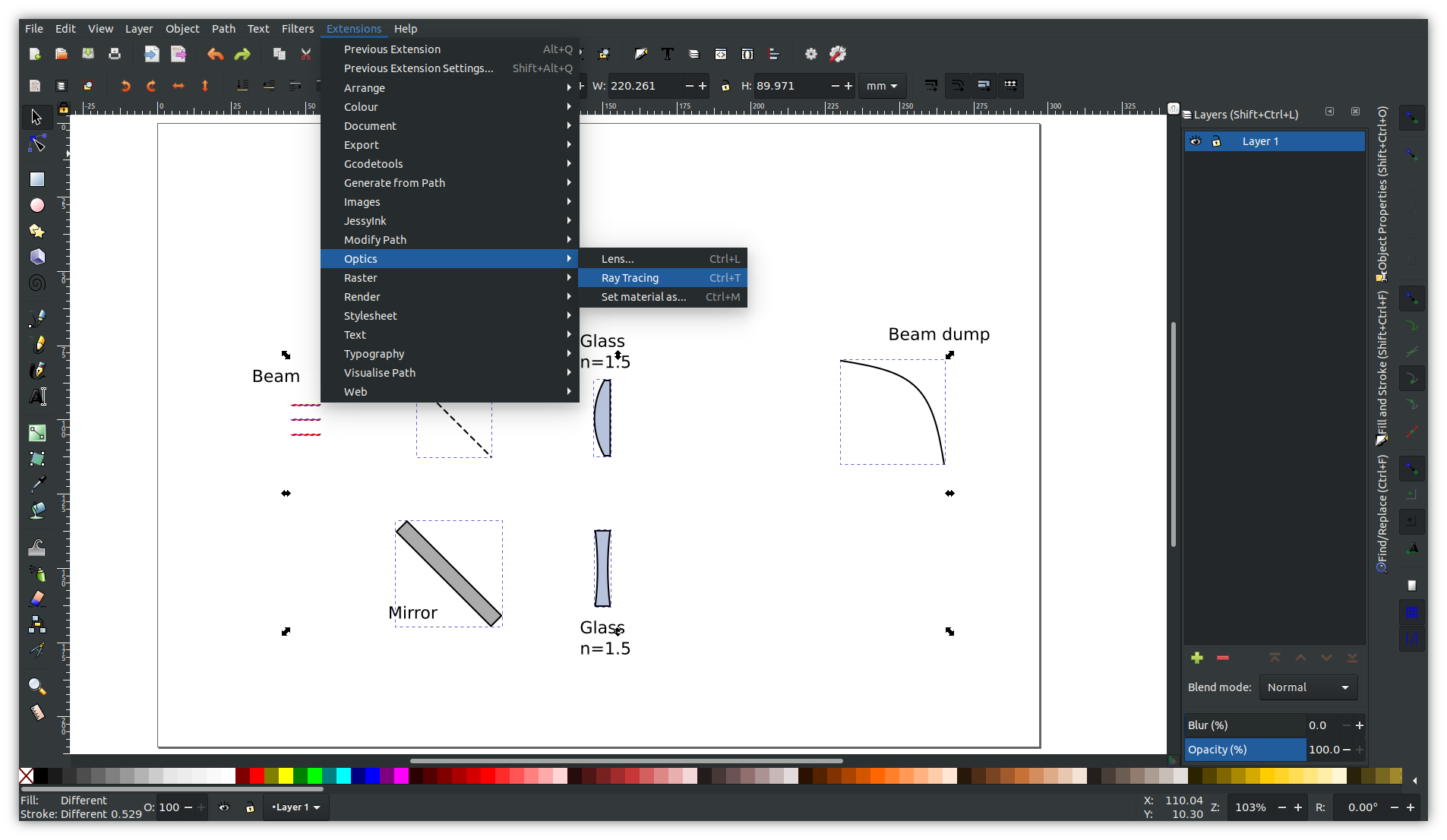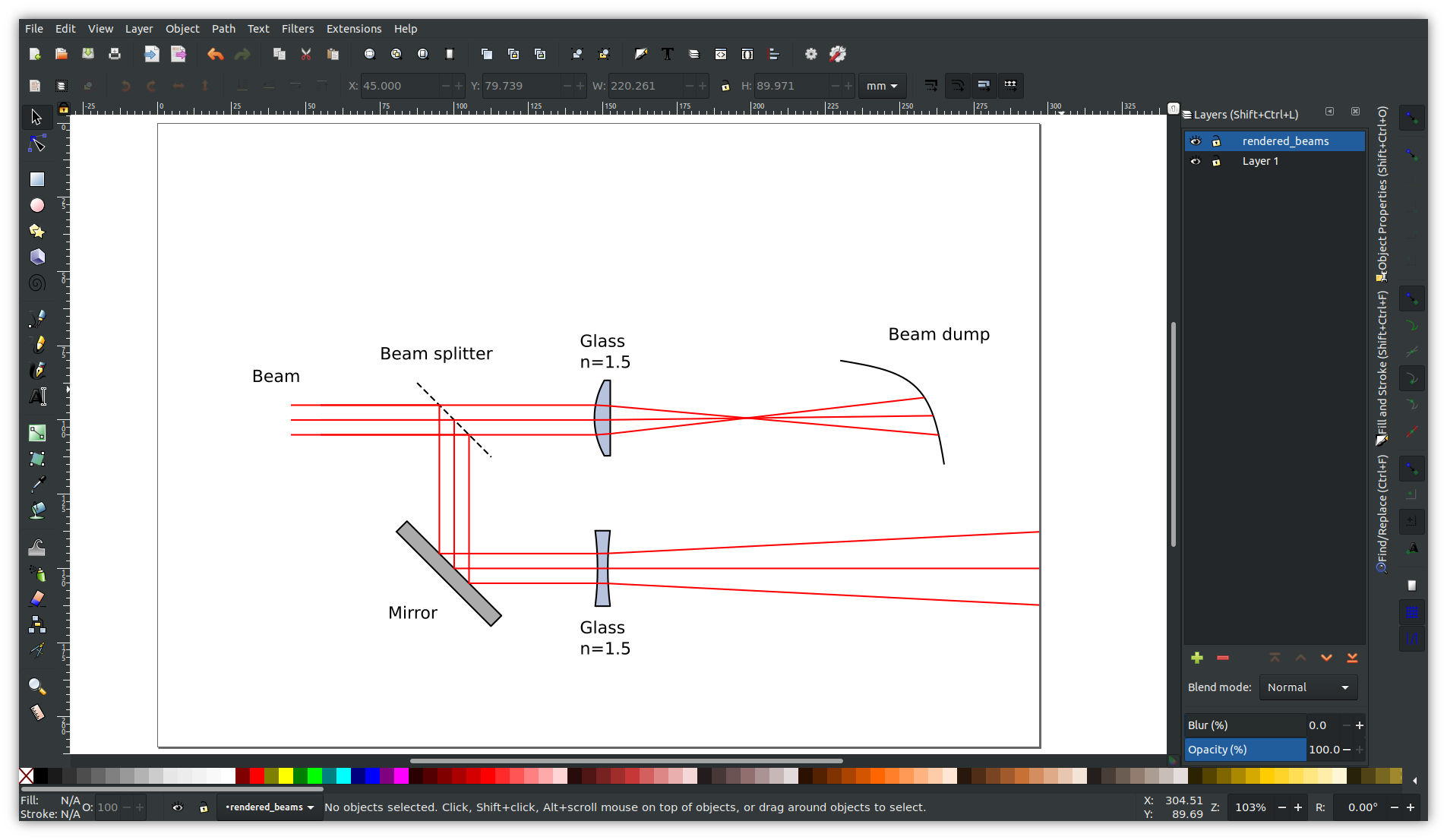damienBloch / Inkscape Raytracing

Inkscape Ray Optics
An extension for Inkscape that makes it easier to draw optical diagrams.
Allows to annotate Inkscape primitives with optical properties and draws beam paths by taking into account reflection and refraction.
Bug reports or suggestions are welcome.
Examples
 |
|---|
| Beams through a sphere |
 |
|---|
| Microscope alignment |
How to install
Copy the extension directory in Inkscape extensions directory.
Inkscape extensions directory can be found with Edit > Preferences > System > User extensions.
For Linux users this can typically be done with:
cd ~/.config/inkscape/extensions
git clone https://github.com/damienBloch/inkscape-raytracing
Requirements
Requires Inkscape1.0 or above.
In addition, this extension also requires the following programs, but they are usually already installed with Inkscape:
How to use
1. For each optical element or group of elements, select it and choose its material with Extensions > Optics > Set material as...:

The material can be one of the following:
-
Beam: source of the ray. Need at least one element with this property to see an effect. Typically the element should be a straight line. -
Mirror: reflects an incoming beam. Element can be a closed or open shape. -
Beam dump: absorbs all incoming beams. Element can be a closed or open shape. -
Beam splitter: for each incoming beam, produces one transmitted beam and one reflected beam. Element can be a closed or open shape, but closed shape will cause the number of beams to increase exponentially. -
Glass: with optical index. Transmits and bends a beam depending on its optical index. Element must be a closed shape.
This will automatically write some text in the element description. This text is used to reccord the properties of the elements. It is also possible to directly write the text in the description.
An element can have at most one optical property and will be ignored if it has two or more.
It is possible to add complementary text in the description. If it doesn't have the syntax optics:<something>, the extra text will simply be ignored.
2. Select the elements to render and run the extension with Extensions > Optics > Ray Tracing:

3. This will trace all the beams originated from a beam element:

The beams are added to a new layer rendered_beams.
Note that the borders of the document blocks the beams and all objects outside the document page will be ignored.
Tips
- Using
Extensions > Optics > Lens...adds a lens to the document with the right radius of curvature to get the desired focal length. - For frequent use, it is possible to bind an extension to a hotkey with
Edit > Preferences > Interface > Keyboard Shortcuts > Extensions. - This extension is compatible with clone objects (
Edit > Clone). They are symbolic clones that mirrors all changes applied to the original object.
Known limitations
- Cannot write the properties in a group description. They must be written in the primitives description.
- Avoid overlapping or touching elements. It won't cause Inkscape to crash, but might give unexpected results.
- The same goes for self-intersecting paths.
- Text elements are ignored whatever their description. If they need to be considered, they must be converted to path first.
- Sometimes, a repeated use of the extension slows down Inkscape. The latest version of Inkscape (1.1alpha) appears to be more stable in that regard, but it is probably safer to save often.
